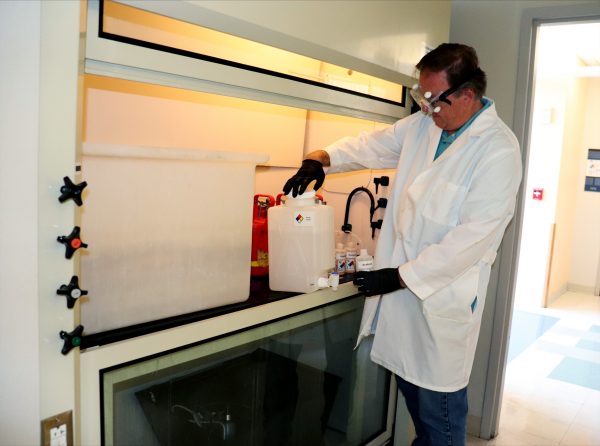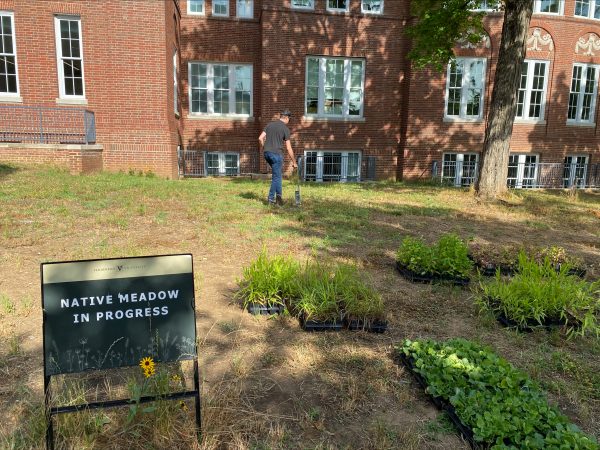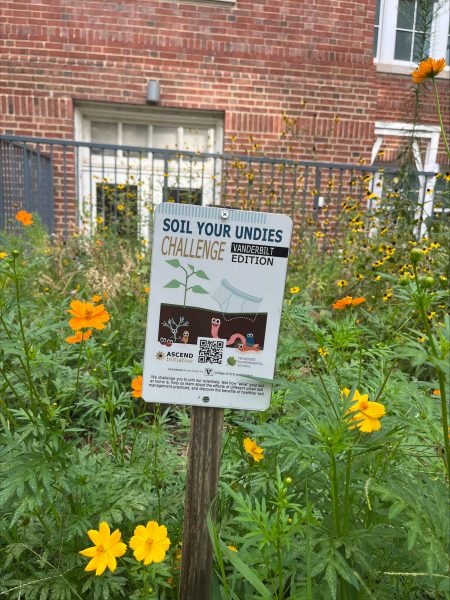Vanderbilt University recently has implemented five sustainability projects with support from the student-led Vanderbilt Green Fund. The projects range from a native species garden that aims to increase biodiversity, pollination and soil quality on campus, to more technology-driven solutions, such as programmable thermostats and solar thermal panels.
Established in 2011 by members of Students Promoting Environmental Awareness and Responsibility and Vanderbilt Student Government, the Vanderbilt Green Fund provides a total of $150,000 annually to select projects that help the university transition to a sustainable future. Any student associated with Vanderbilt can propose a project for consideration. Funding for the initiative comes from Facilities within the Division of Administration.
Green Fund proposals are first evaluated by a student committee organized jointly by SPEAR and VSG. The winner of each year’s Green-A-Thon is automatically forwarded as a top proposal. The student committee then recommends the top proposals to the Green Fund Working Group, which makes the final funding decisions. The working group comprises six administrators, six students and at least one faculty member.
The next round of project proposals will be accepted during the Spring 2023 semester.
Vanderbilt implemented the following five projects on campus this semester:
Acetone Distillation Machine

Vanderbilt chemistry students presented the idea of installing distillation machines in laboratories across campus to encourage the recycling of the acetone, which is used daily for cleaning and removing contaminants from glassware. The pilot project began in the organic chemistry labs, where approximately 20 to 30 liters of acetone are used per week. With the installation of just one distillation machine, Vanderbilt is saving up to 650 liters of acetone per week, reducing the amount of hazardous waste the university generates.
Programmable Thermostats
To reduce energy use for heating and cooling on campus, the university has installed programmable thermostats in the 2800 Vanderbilt Place building. The thermostats, which inform Vanderbilt Facilities about energy use trends in the building, can adapt to the occupants’ schedules and adjust the cooling and heating output accordingly.
Pollinator and Native Species Garden
 The Vanderbilt University Arboretum’s history extends to the founding of the university by Bishop McTyeire, and its educational mission is referenced as early as 1878. The collaboration of students, faculty and staff is an important part of the care and growth of the arboretum and many of the university’s green spaces.
The Vanderbilt University Arboretum’s history extends to the founding of the university by Bishop McTyeire, and its educational mission is referenced as early as 1878. The collaboration of students, faculty and staff is an important part of the care and growth of the arboretum and many of the university’s green spaces.
 As part of the 2021 Green Fund, students proposed a way to elevate Vanderbilt’s campus beauty while simultaneously helping bridge the gap between humans and nature. The Pollinator and Native Species Garden is designed to promote the planting of more native plants on campus and increase biodiversity, pollination and soil quality. The “Soil-Your-Undies Challenge” will collect soil quality data to understand the impact the native plantings have on the site.
As part of the 2021 Green Fund, students proposed a way to elevate Vanderbilt’s campus beauty while simultaneously helping bridge the gap between humans and nature. The Pollinator and Native Species Garden is designed to promote the planting of more native plants on campus and increase biodiversity, pollination and soil quality. The “Soil-Your-Undies Challenge” will collect soil quality data to understand the impact the native plantings have on the site.
Students worked closely with the university’s landscape architect and the grounds team to design the garden and select a variety of perennial pollinator plants. The Pollinator and Native Species Garden, located on Peabody College’s campus behind the newly renovated Mayborn and 6 Magnolia buildings, features walking pathways and is now available for the Vanderbilt community to tour and enjoy.
LED and Motion-Sensor Lights
To decrease carbon emissions and lower energy usage, the university converted 125 light fixtures on the third and fourth floors of Vanderbilt Blair School of Music to LED fixtures, including in the hallways, communal spaces and practice rooms. Additionally, 17 motion sensors were installed in the Blair School practice rooms. The conversion to LEDs saves energy whenever the lights are on, and the motion sensors ensure that lighting is on only when a practice room is in use.
Solar Thermal Roof
Solar thermal panels installed on the roof of the David Williams II Recreation and Wellness Center will heat water that is used in the building for showers and sinks. A similar system installed on the Currey Tennis Center in 2016 routinely reduces the amount of natural gas needed to heat water in the building by 25 percent.
For more information on the university’s sustainability initiatives, please visit the FutureVU Sustainability website or email futurevusustainability@vanderbilt.edu.